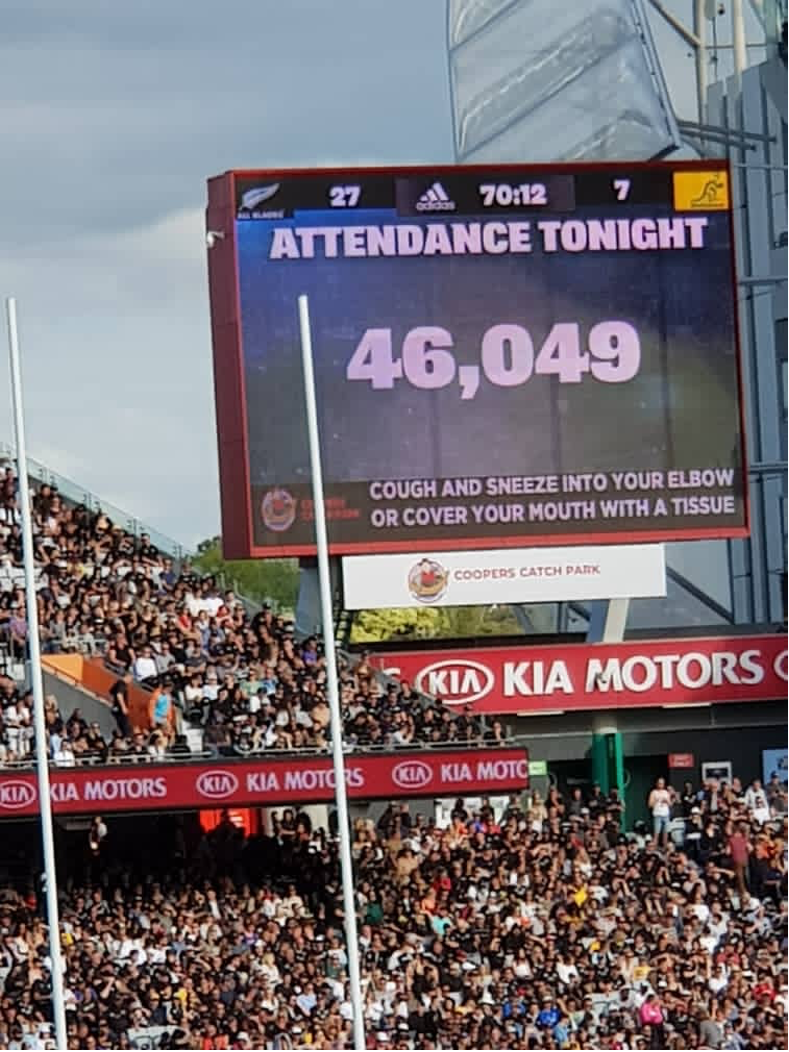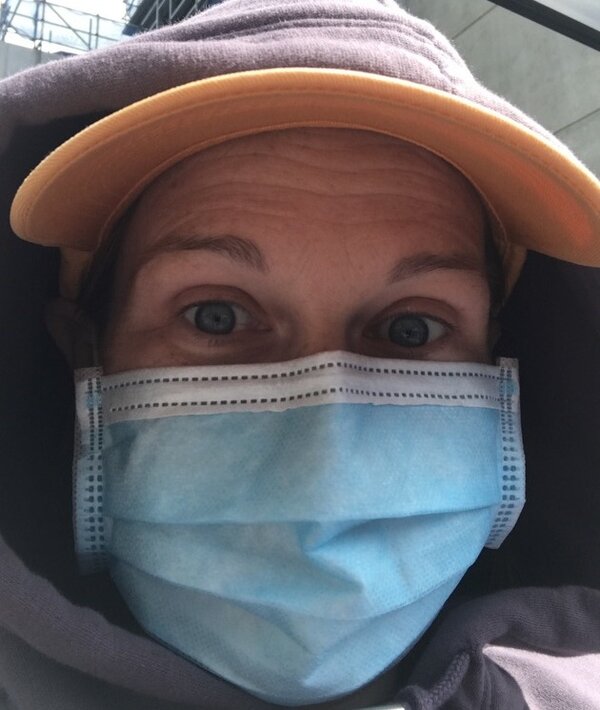It was our first huge decision as a couple. My partner’s diplomatic post in Abidjan, Cote d’Ivoire, was coming to an end and, on March 17, 2020, we submitted our top choices for our next posting: Albania, Macedonia, Brazil, Trinidad and Tobago, Paraguay and Fiji.
As we anxiously waited to find out where we’d spend the next three-to-four years of our lives, COVID-19 was becoming a growing worldwide concern. Only after we learned we’d be posted in Fiji, a small island nation in the South Pacific, did we begin to understand how a journey that should take an already-long 40 hours would turn into a three-continent odyssey of 119 days, involving a dozen COVID tests (a few of them positive) and weeks spent in quarantine under armed guard – all because of the pandemic.
On July 26, we packed up our home in the 100+ Fahrenheit heat, wearing masks and practicing other COVID-prevention behaviors. To leave Ivory Coast, we’d need to take our mandatory COVID-19 tests. The tests needed to be conducted within 72 hours of traveling, a tall order in a developing country with limited tests available and, at that time, an average wait for results of about a month (if the results came back at all).
We finally figured out how to get quicker tests and were swabbed for the long journey ahead.
Twelve hours before we were supposed to depart, we got our results back. Ignacio tested negative. But I, much to my surprise, tested positive.
We were immediately isolated separately in different bedrooms in a hotel suite. One week later, I tested positive again and he again tested negative. So we decided he would head to Fiji, while I stayed in Abidjan and we’d meet each other in a week — two at the most — at our new home.
Luckily, the hotel room had a balcony on which I could pace back and forth for a little exercise and fresh air, since leaving the room was not allowed. Some kind friends dropped off food at the door but, aside from testing, I did not interact face-to-face with any humans for three solid weeks.
In the meantime, flight schedules were changing and, with the COVID pandemic raging on, all routes to Fiji were closed except for one weekly flight. It took 24 days of self-quarantine in Abidjan to test negative only to fly to Dubai (via Paris) where my onward flight via New Zealand was cancelled.
Dubai was one of the few places in the world open to tourists at the time. This was a lucky turn of events since I’d need to wait for a month in Dubai to get a flight to Auckland. Although I had tested negative for COVID-19 in Ivory Coast in order to be able to fly into Dubai (my third COVID test), the United Arab Emirates asks visitors to be careful and limit unnecessary contact for the first two weeks visiting, which I dutifully did. After that, I spent my time (masked up, of course) alternating between melting outside waiting for my Ubers as Maseratis and Lamborghinis filled the streets and being blasted with full air-conditioning in malls full of Gucci, Louis Vuitton and indoor ski slopes.
I was finally able to leave Dubai 31 days after I had arrived. But since there was only one flight a week to Fiji from New Zealand, the timing needed to be perfect. Fiji’s Ministry of Health required a specific type of COVID PCR test with the lab results reported according to their specifications for any traveler wishing to enter the country, and everybody coming into the country would need to quarantine at a government facility for 14 days upon arrival, testing negative twice over that period. In the meantime, New Zealand had doubled down on their very strict border regulations, so I would be allowed to stay at the Auckland airport for only 24 hours.
After discussions with 17 hospitals and labs in Dubai, it was clear that none were using the type of test Fiji was asking for (every country has their own specifications and recommendations for diagnosis). Three days before traveling to New Zealand, where Ignacio was waiting for me, I took COVID-19 tests at two of the most prestigious medical centers in Dubai (my sixth and seventh tests) and submitted these results to the Ministry of Health in Fiji.
Our meeting in the Auckland airport was engineered down to the minute. This was, until my negative COVID-19 results were rejected by the Fiji Ministry of Health an hour before I was to board the flight from Dubai to New Zealand. Luckily, I was accepted into New Zealand – for yet another quarantine and get the needed testing done there in order to be able to gain access to Fiji.
On September 30, I was then finally on the 19-hour flight to Auckland (after a stop at the duty-free shop to get a sweatshirt and a pair of sweatpants since all I had were summer clothes and I was headed into a place with temperatures in the 40s).
New Zealand is known as one of the, if not the best country, to have managed COVID-19. The Air Force oversees the mandatory two-week supervised quarantines at government facilities for anybody allowed to enter the country. The rules are very strict. You are ushered to the facility (mostly hotels that have been repurposed to serve as quarantine facilities) which are set up to prevent exposure including mandatory COVID-19 tests, no touch food/linen/garbage service and social distancing measures.
Although the quarantine took place in a hotel, it was far from a vacation. There was no maid service or room service. The only time I could leave the room is for daily 60-minute walks (if I signed up in time to get a “slot”) and to report for the mandatory COVID-19 testing on days two and 13 of quarantine (my 8th and 9th COVID-19 tests). The 60-minute walk my facility offered began with an escorted shuttle ride to a dock in the harbor, where five locked pens set up by connecting chain link and event fencing cable. They were large cages, really.

While in quarantine in Auckland, the author’s only daily exercise was in large outdoor pens.
Sometimes people in the city would come to gawk at us as we walked in circles, since we were wearing the mandatory PPE for those in quarantine. We were a spectacle since the rest of New Zealand has relatively normal lives without PPE and social distancing thanks to their great efforts at the border to contain the disease. I usually got the pen that was 81 steps long. But on the day I got the pen that was 131 steps long, it felt like Christmas!
I was very struck by how quickly and easily humans can adjust to a new normal, after 14 days and two negative tests, walking out of the facility without PPE felt strange. There was short-term comfort to the routine and rules and evidence of everybody adhering for the sake of the greater good. That being said, freedom was fantastic, and my love and I were finally reunited.
Great! Fiji bound, right? Wrong. The weekly flights to Fiji had either been cancelled or were full and the next available was another month away.
There are worse places to be stuck than New Zealand. Every day, we marveled at the privilege we had simply being in a country where the government protected its citizens from the disease. We even went to the rugby match that pitted New Zealand against Australia-an epic rivalry-with 46,000+ other fans. This couldn’t have happened anywhere else in the world and we were extremely blessed to be there.

A rarity in 2020, the author was able to attend a large rugby event at a stadium full of people.
The week before we boarded the final leg to Fiji, our shipment of clothes and furniture arrived in the country, beating us there probably for the first time in expat moving history. Usually, expats have been in country for several months before the shipment arrives the problem usually is trying to make do with what you have until your shipment arrived.
Then our COVID-19 test results from New Zealand (my tenth COVID PCR test) were accepted by the Fijian Ministry of Health. After a month in Auckland, we were finally en route home! The only thing between us and our pre-selected home in Suva (whose landlord was graciously saving for us from the August 1st date we originally had for the lease) was another two-week quarantine in a government facility in Fiji.
The last quarantine was in a nice facility, a three-hour drive from our final destination which was in some ways more strict than New Zealand. Our outside time was limited to walking back and forth on a path that joined the different quarantine rooms for 30 minutes a day, guarded by the Fijian Army. COVID-19 testing (on days 2 and 13 of quarantine, my 11th and 12th tests) occurred at the door of the room but the difference between quarantining by yourself, which I had done in Cote d’Ivoire, Dubai and Auckland, versus with someone else was night and day.
Finally, four countries, 12 COVID-19 tests and 119 days later after we were supposed to have arrived, we finally made it to Suva, Fiji on November 19.
As I moved from country to country, I consistently saw masses of people adhering to the regulations of that country, but when I turned on the television and saw what was going on back in the United States, it didn’t feel like the COVID prevention measures were being taken as seriously.
This incredible journey taught me how hard it can be to do the right thing, especially when others may be flouting the rules and going to bars or out to eat, for example. We ask people around the world to adopt healthy behaviors such as choosing modern contraception or sleeping under mosquito nets or taking their tuberculosis medicine every day. This experience made me understand how difficult it can sometimes be to do what is necessary, such as wearing masks all the time, quarantining when mandated and staying distant from others. I won’t forget how this felt the next time I ask someone else to do the difficult – but right – thing.
Anna McCartney-Melstad is the senior technical advisor for malaria for CCP’s Breakthrough ACTION project.





